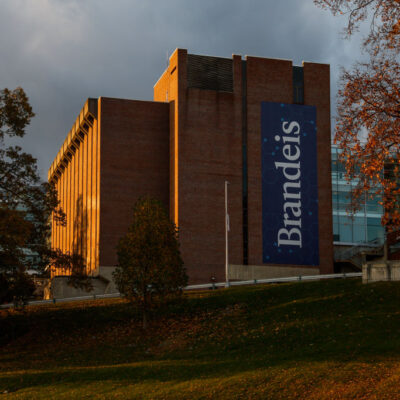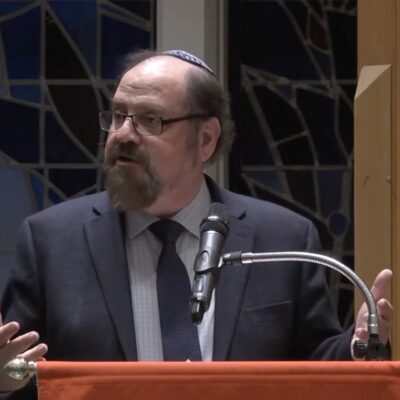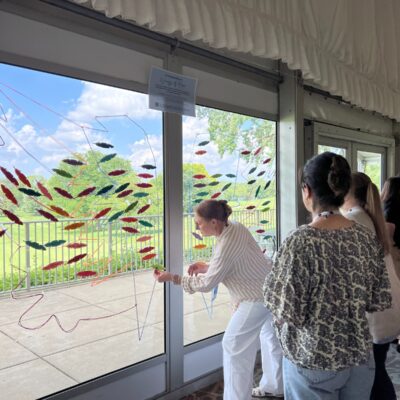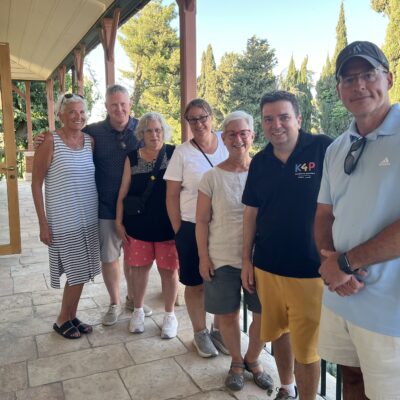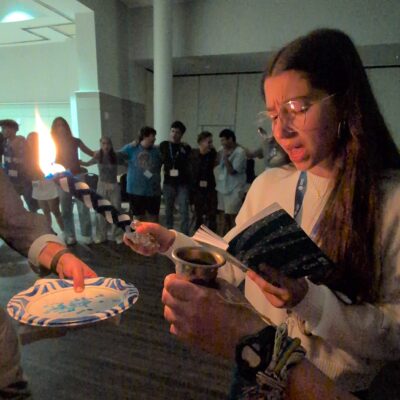TURN, TURN, TURN
As Gruss Life sunsets, its Center for Initiatives in Jewish Education spins off and looks to rise
Previously supported by Gruss, the program known for its STEM offerings for Jewish students across the country is looking to expand its funding streams

Tori Bergel/eJewishPhilanthropy
Jewish students take part in a robotics tournament organized by the Center for Initiatives in Jewish Education in March 2023.
After more than 30 years of operations, the Caroline and Joseph S. Gruss Life Monument Fund tied up its loose ends in December 2024 and completed the process of “sunsetting,” deliberately shutting down and dispersing its resources to other organizations.
The fund’s benefits program for teachers, a core feature of its work for over 30 years, was handed off to UJA-Federation of New York, alongside an endowment of over $15 million to support the project. And the Center for Initiatives in Jewish Education (CIJE), which emerged as the fund’s flagship program in 2008, has spun off — armed with a similar sum — and will continue operating independently of the foundation, according to Jason Cury, the former president and CEO of the Gruss Life Monument Fund and current president of CIJE.
For decades, Joseph Gruss, a financier and philanthropist, directed his charitable giving for Jewish education through UJA-Federation of New York. But in 1991, two years before his death, Gruss founded the Gruss Life Monument Funds, located in New York, as a platform to further the philanthropic mission of himself and his late wife, Caroline. Gruss Life provided over $15 million to over 400 educational institutions and nonprofits, as well as providing interest-free mortgages and loans to individuals and institutions in need, scholarships for elementary through high school and a benefits program for Jewish day school educators.
Around 2000, discussions were starting about ways to provide Jewish students the skills to find employment in a 21st-century technology-infused economy, according to Cury. So the fund set up an education department to provide computer assisted learning, and to give the students foundational skills in reading, writing and mathematics. In 2006, Gruss expanded to provide STEM (Science, Technology, Engineering and Math) education to Jewish day schools. By 2008, that program became CIJE.
“We wanted the Jewish world at large to see that what we were doing was making the Jewish day schools much better — with the then STEM programs that we had developed. And so we decided to separate out the education department into a separate organization,” Cury told eJP.
Established as an independent nonprofit and catch-all for the fund’s educational initiatives within Jewish day schools across the country, CIJE is best known for its “Innovation Day,” a program that brings together 1,500 Jewish high schoolers from across the New York area for an engineering fair; it also provides a number of other interactive educational opportunities to its network of over 200 schools, and tens of thousands of students. The organization also provides curriculum support and mentorship for educators to support comprehensive STEM education for Jewish students across the country.
“We keep on growing in our programs, growing in our schools, growing in the impact of students. We have, annually, probably tens of thousands of students every single year impacted by CIJE and tons of professional development. That was always a vision when the first foundation settled out, and it continues,” said Philip Brazil, CIJE’s vice president of development.
According to Cury, around five years ago, as CIJE’s growth outpaced that of other initiatives, Gruss Life decided to focus primarily on the project. The consolidation of efforts ultimately led to Gruss Life’s decision to sunset.
“Most of what we were doing was in the area of the engineering sciences, math and so forth, and we just felt that it wasn’t necessary for us to devote a lot of time to doing other aspects,” said Cury. “The programs that we had, while still beneficial, were really not as much of a priority as the need to do the STEAM programming that we’re now doing, and so we decided to sunset Gruss Life.”
According to Brazil, though CIJE continues to expand, the parting $15 million donation from Gruss will only provide a runway of three to four years before the organization will need to find new sources of funding. As an initiative that operates within day schools, finding funding is challenging, because satisfied parents interested in donating often turn to the school directly. Many foundations that might be interested in supporting the initiative also simply might not know the details of CIJE’s status, he added.

